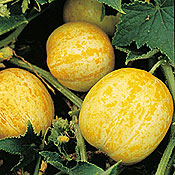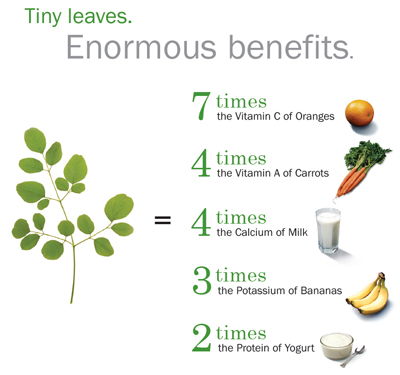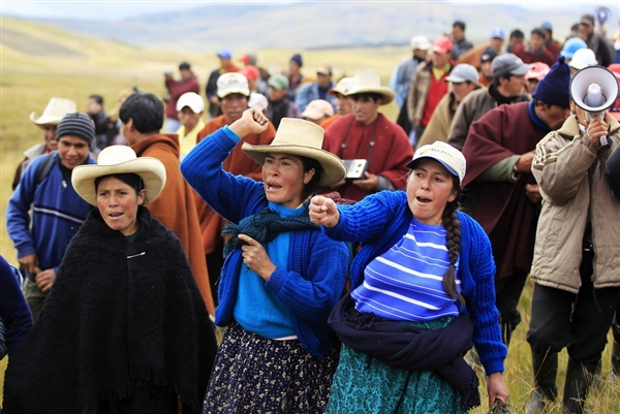Perennial Purple Tree Collard
A tall growing, non heading member of the cabbage family, tree collards
were introduced to California, probably during the latter half of the
eighteenth century. They are nutritious and a 100 square foot bed can
provide four times more protein and eight times more calcium than the
milk produced from a fodder crop grown in the same area. In addition,
tree collards contain no oxalic acid; therefore, they may be eaten raw
without iron being tied up. Perennial Purple Tree Collard leaves are
rich in calcium (226 mg per cup, cooked), vitamins B1, B2, B9, and C
(which may be leached by cooking, however), as well as beta-carotene
(pro-vitamin A).
Read more: http://richardsfarms.vpweb.com/Tree-Collard-Information.html
Fooled You is a hybrid (F-1) variety of jalapeno with virtually no heat.
They have the flavor and appearance of jalapenos, but you can munch them like bell peppers. They are typically just a bit larger than regular jalapenos at about 3 ¼ inches long and 1 inch wide. The fruit is heavy, thick-walled, and will turn from green to red if allowed to mature on the plant. The plant will grow to just over 2 feet tall and many seed companies boast large yields in about 65 days.
Read more: http://davesgarden.com/guides/articles/view/1353/#ixzz2RhzxxjRB
Mouse Mellon
Tiny, 1 x 1/2 in. light-green fruits with darker mottling look like
watermelons for a doll house. The flesh is white, crisp, crunchy with a
slight lemony tartness. The flavor is closer to a cucumber than a melon.
One person described them as,"Cucumber with a bit of watermelon rind
and a squeeze of lemon juice." It is said that the missing crunch can
make people go off diets.
Read more: http://store.underwoodgardens.com/Cucamelon-_-Mouse-Melon-Melothria-scabra/productinfo/V1041/
Lemon Cucumber
Yellow-colored, spherical, the dimensions of an ample fist. Yep, these
types of cucumbers appear like lemons (significantly, that’s a image of
cucumbers, lemon cucumbers, not really lemons). These are sweet, without
having that nasty side that a majority of cucumbers have got, thin
skins, minimum gentle seeds, as well as tasty. They’re delicious raw,
however create tasty pickles as well.
Read more: http://whiteonricecouple.com/recipes/lemon-cucumbers-with-pesto/
Strawberry Spinach
One of the more interesting plants we grow, or should I say, grows
itself is strawberry spinach, also called strawberry blite, beet berry,
Indian paint, and a number of other names. The plant is very cold hardy
but will thrive in the hottest weather. With a long taproot it can get
by on very little water, of course the more water it gets the larger the
fruit.
Ground Chery
The typical Physalis fruit is similar to a firm tomato (in texture), and like strawberries or other fruit in flavor; they have a mild, refreshing acidity.
Litchi Tomatoes
Because the plant itself is covered with thorns, it is sometimes used
as a hedge plant to discourage animals from wandering into vegetable
gardens — not a bad idea.
The fruits ripen dark red and are round
and somewhat bullet-shaped, tapering to a blunt point. The interior
flesh is yellow and full of tiny flat seeds that are arranged much the
same way as seeds in a cherry tomato. Thus, when eaten out of hand, the
raw fruit has the mouth feeling of raspberries. The actual flavor is
tart and refreshing, quite similar to a sour cherry, for which it can be
used as a relatively good substitute in pies.
Read more: http://www.motherearthnews.com/Real-Food/Litchi-Fruit-Morelle-De-Balbis.aspx#ixzz2RjYTsdlI
Moringa Oleifera and Moringa Stenopetala
Moringa, native to parts of Africa and Asia, is the sole genus in the flowering plant family Moringaceae.
The most widely cultivated species is Moringa oleifera, a multipurpose tree native to the foothills of the Himalayas in northwestern India and cultivated throughout the tropics. M. stenopetala, an African species, is also widely grown, but to a much lesser extent than M. oleifera.
Moringa grows quickly in many types of environments.
Much of the plant is edible by humans or by farm animals. The leaves are rich in protein, vitamin A, vitamin B, vitamin C and minerals
Do you have more that you would like me to add to this list?
Saturday, April 27, 2013
Monday, April 15, 2013
Sunday, April 14, 2013
Saturday, April 13, 2013
Garden Update and Request for Help With Deer
In this video I asked about preventing deer from entering my garden. Since then I have begun to build a strong fence. The minimum height is 6 feet. My hope is that deer will look at the area inside as too difficult to jump into, and go elsewhere. Many people talk about using smells and tastes to drive deer away. My experience with hair, lion dung, dogs, dial soap, garlic and pepper is that these methods do not work.
I hope you enjoy the tour. I'm looking forward to posting more updates later this summer
I hope you enjoy the tour. I'm looking forward to posting more updates later this summer
Purchasing or Designing a Property
Permaculture
This example might help make permaculture design even easier to understand.
http://permaculturenews.org/2013/09/18/the-permaculture-design-process-an-example/
Monday, April 8, 2013
Salad
Growing Communities is a community-led organisation based in Hackney, North London, which is providing fresh food to urban communities in a sustainable way. The list of ingredients you might find in one of their salad bags is incredible.
Many of these are considered <weeds.>
I hope this gives you some ideas for your salad garden!
Red-Veined Sorrel
Chives
Cornet de Bordeaux
Quite a list! Here are some more.
Water Cress
Thursday, April 4, 2013
Least Expensive Wicking Bed Ever!
There was no explanation of what the drain pipe in the center is for, but I drew this concept of what I think is going on here and why this guy in the photo below has such a big wide on.
Fill the tub with sand and cover it with weed cloth before dumping the soil in on top to create a good water reservoir
This has got to be the least expensive wicking bed ever.
Rob Bob has been using wicking beds for a while. Here's a video he made demonstrating the method he uses for brassicas. He top waters his wicking beds and tamps down the soil.
This is the best video I've found about wicking beds
Monday, April 1, 2013
Billboard Tarps are Not a Good Deal
A warning about these tarps
The vinyl is chemically unstable and unhealthy.
Subscribe to:
Posts (Atom)














































